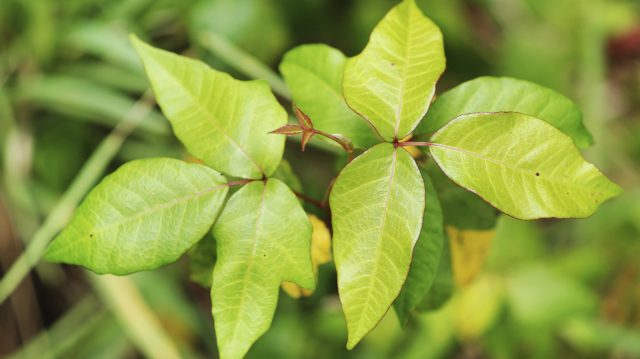
Some 85 percent of the population is allergic to poison ivy and must be wary of ‘leaves of three’ when they are outdoors. UM researchers have discovered a compound that may lead to a vaccine against the itchy rash the plant causes.
OXFORD, Miss. – The University of Mississippi has been issued its fourth patent for a product that could prevent the painful itching and rash due to exposure to poison ivy, poison oak and poison sumac.
The compound is based on research conducted in the UM School of Pharmacy and at ElSohly Laboratories Inc. Hapten Sciences, a Memphis-based biopharmaceutical company, obtained a worldwide, exclusive license for the technology from the university in 2010 and has conducted extensive preclinical and clinical development work since then.
“We are delighted to be a partner with the University of Mississippi to develop this novel and important product candidate, and look forward to continued development to seek regulatory approval so that we can provide it to people that suffer from contact dermatitis caused by poison ivy, oak and sumac,” said Raymond J. Hage Jr., CEO and president of Hapten Sciences.
The compound is a small molecule that acts like a vaccine or immunotherapy to prevent itching and rash after exposure to a sap oil found in poison ivy, poison oak and poison sumac plants. One or more of these common poisonous plant species are found throughout the contiguous U.S., from woodlands and fields to parks and backyards.
Approximately 85 percent of the population is allergic to poison ivy, poison sumac or poison oak, according to the American Skin Association. It is the most common allergic reaction in the U.S., affecting as many as 50 million Americans each year.
A Phase I safety study on the compound was completed by Hapten Sciences in 2017. In 2018, the company initiated a second clinical study to evaluate the safety and biologic activity in subjects who tested positive to poison ivy.
Hapten Sciences expects results from the study in the second half of this year.
“We are excited about this next phase of our partnership with Hapten Sciences,” said Josh Gladden, UM vice chancellor for research and sponsored programs. “The most important outcome of our research mission is the impact it creates on society, and commercialization of technologies developed at UM is an important and growing part of that.”
The patent, issued by the U.S. Patent and Trademark Office, part of the U.S. Department of Commerce, is No. 10,322,103. This is the fourth patent surrounding the compound, with previous patents covering its active pharmaceutical ingredient and other key aspects of the product’s formulation.
“This fourth patent adds to a substantial portfolio of intellectual property,” said Allyson Best, director of the UM Office of Technology Commercialization. “We appreciate Hapten’s continued investment in the development of this important product to help individuals who are so negatively affected by poison ivy.”
Hapten Sciences is dedicated to identifying and developing novel, early-stage products that will significantly contribute to the health and well-being of people around the world.